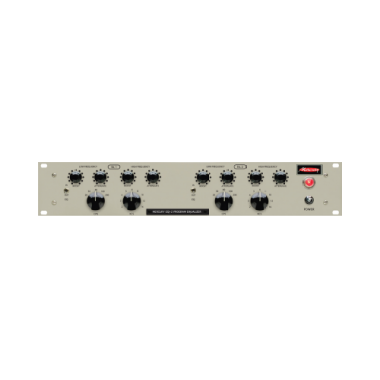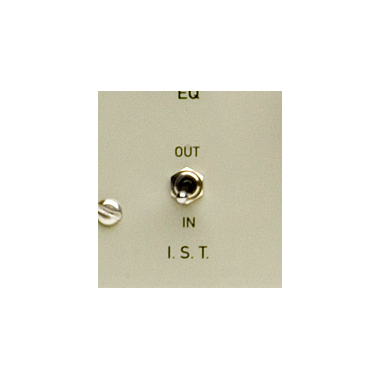- Flyline Music AG
Hauptmenü:
×
- index
-
Produkte
-
Mikrofone
-
3DIO
- Microphones
- Pro Microphones
- Accessoires
- AEA
- Antelope Audio
- Avantone Pro
- Bock Audio Design
-
Cascade Microphones
- Short Ribbons
- Long Ribbons
- Specialty Ribbons
- Accessoires
- Cloud Microphones
- Chandler Limited
- Coles Electroacoustics
- Dizengoff Audio
-
Earthworks
- Vocal Series
- PianoMic Series
- Drum Series
- SR Series
- TC Series
- QTC Series
- Periscope Series
- Measurement Series
- Accessoires
- Ear Trumpet Labs
- Granelli Audio Labs
- Josephson
- Kahayan Pro Audio
- Luke Audio
- Manley Labs
- Mojave Audio
- Placid Audio
- Roswell Pro Audio
- Royer Labs
- Sontronics
- Stager Microphones
- Townsend Labs
- Vanguard Audio Labs
- Warm Audio
-
3DIO
-
Studio Equipment
- A Designs Audio
- ACME Audio
- AEA
- AMS Neve
- Analoguetube
-
Antelope Audio
- Discrete Synergy Core Interfaces
- Discrete Interfaces
- HDX & USB Interfaces
- Thunderbolt & USB Interfaces
- Stereo Converters
- Master Clocks
- Mic Preamps
- Monitor Controller
- API
- Asparion
- Audified
- Avalon Designs
-
BAE
- Guitar Tools
- 500 Series
- Deskop Mic Preamps
- Modules & 19"
- Bettermaker
- Big Bear Audio
- Black Box
-
Black Lion Audio
-
500 Series
- Modules
- Rack
-
Outboard
- Mic Preamps
- Compressors
- Studio Clocks
-
500 Series
-
BURL Audio
- B1 500 Series Modules
- B2 Bombers
- B26 Orca
- B32 Vancouver
- B16 Mothership
- B80 Mothership
-
Chandler Limited
- Abbey Road Series
- 500 Series
- Germanium Series
- Rack Mixer
- Guitar Pedals
-
Cranborne Audio
- Outboard
- Desktop
-
500 Series
- Modules
- Racks
- Crane Song
-
Daking
- Preamplifiers
- Compressors
-
Dangerous Music
- Converters
- Controller
- Router
- Summierer
- Outboard
- Dave Hill Designs
- Dizengoff Audio
-
Drawmer
- Monitor Controller
- Sound Protection
- 60ies / 70ies Series
- MXPro Series
- Gates & Compressors
- Digital Management
- Signal Splitters
- Signal Distribution
- Power Amplifier
- Earthworks
-
Elysia
- 500 Series Modules
- 19" Outboard
-
Empirical Labs
- 500 Series
- 19" Outboard
- Plug-In
- Flock Audio
-
Fredenstein
- MixCube
- HD Reference Preamps
-
500 Series
- Artistic Modules
- F600 Modules
- Racks
- Vintage Analog Series
- Outboard Equipment
- Metering
- Grace Design
- Great River Electronics
-
Heritage Audio
- RAM Series
- Elite Series
- 500 Series
- Table Top Series
- 19" Outboard
- Classic Series
- Highland Dynamics
-
IGS Audio
- 500 Series
-
19" Outboard
- Spring Reverb
- Compressors
- Equalizers
- Preamplifier
- Interphase Audio
-
Inward Connections
- 500 Series Modules
- 19" Outboard
- JDK Audio
-
Kahayan Pro Audio
- Summing Mixers
- Amp/Speaker Selectors
- Preamplifier
-
Kush Audio
- 500 Series Modules
- 19" Outboard
-
La Chapell Audio
- 500 Series Modules
- 1/2 19" Outboard
- 19" Outboard
-
Lindell Audio
- 500 Series Modules
- 500 Series Racks
-
Lisson Grove
- 19" Outboard
- Little Labs
- Locomotive Audio
-
Looptrotter
- 500 Series Modules
- Outboard Equipment
- Modular Console
- Mäag Audio
-
Manley
- Mic Pres / Combos
- Equalizers
- Dynamics
- Maselec
-
Mercury Recording Equipment
-
500 Series
- Modules
- Racks
- Power Supplies
- Accessoires
- Vacuum Tube Outboard
- Solid State Outboard
- Custom Shop Outboard
-
500 Series
- Millennia
-
Mytek Digital
- Brooklyn Series
- Converters
- Private Q2
-
Overstayer
- 19" Outboard
- Pete's Place Audio
-
Phoenix Audio
- Desktop
- 500 Series
- 19" Outboard
- 1/2 19" Outboard
- Pultec
-
Purple Audio
- MFTwenty5 Rack Mixer
- 500 Series
- 19" Outboard
- Q2 Audio
-
Retro Instruments
- 500 Series Modules
- Portable Amplifier
- Outboard Equipment
-
Roger Schult
- 500 Series Modules
- 19" Outboard
-
Power Supplies
- Roll Music Systems
- Rupert Neve Designs
-
Serpent Audio
- 500 Series Modules
- 19" Outboard
-
Shadow Hills Industries
- 500 Series
- 19" Outbaord
-
Solid State Logic
- Audio Interfaces
- Small Format Consoles
- 500 Series
- Analogue Processors
- X-Rack System
- Digital Equipment
- Speck Electronics
-
Spectra 1964
- 19" Outboard
- Desktop
- 500 Series
- Standard Audio
-
Teegarden Audio
- DI Boxes
- Mic Preamps
-
Teknosign
- Box Line
- Preamplifier
- Summing Mixers
- Power Conditioner
- Patchbays/Adapters
- Thermionic Culture
-
TK Audio
- 500 Series Modules
- 19" Outboard
- Tonelux
- Tube Tech
- UK Sound by BAE
-
Universal Audio
- UAD-2 Live Rack
- OX The Amp Top Box
- Audio Interfaces
- UAD-2 Accelerators
- Analog Hardware
- Useful Arts Audio
- Vertigo Sound
- Warm Audio
- Wave Distro
- Weight Tank
- WesAudio
- Whitestone Audio
-
Monitoring
- Auratone
- Avantone Pro
-
Aviom
- FUGU Speakers
- Livemix
- Unity Audio
-
Electronic Sound
-
Mode Machines
- 19" Equipment
- Desktop
- MIDI Tools
- Pedals
- Sequential
-
Studio Electronics
- Boomstar Modular Synthesizers
- Boomstar Modular Eurorack
- Boomstar Desktop Synthesizers
- 19" Analog Synthesizers
-
Vermona
- Modular Module
- Synthesizer
- Drums & Percussion
- Effektgeräte
-
WMD
- Effect Pedals
-
Eurorack Modules
- Aperture
- Arpitecht
- Arpitecht Triad
- Buffered Multiple
- Chimera
- Compressor
- DVCA
- Fracture
- Geiger Counter
- Invert Offset
- Metron
- Micro Hadron Collider
- MSCL
- MM Envelope
- MM Extension
- MM VCA
- Overseer
- Performance Mixer
- PM Mutes Expander
- PM Channels
- PDO MKII
- PDO Triple Bipolar VCA
- Pro Output
- QAAF
- SSM
- SSM Expand
- Synchrodyne
- Synchrodyne Expand
- TRSHMSTR
-
WMD / SSF Collaboration
- Monolith Synthesizer
- Eurorack Modules
-
Mode Machines
-
Accessoires
-
ATR
- MDS-36 Tapes
- Precision Analog Master Tapes
-
Bittree
- Dante Patchbays
- TT Patchbays
- XLR / Jack Patchbays
- TT Patch Cables
- Accessoires
- Cloud Microphones
-
Latch Lake
- micKing®
- Xtra Booms
- iOxbooms
- Parts
-
Pete's Place Audio
- Pan 60
- Recording The Masters
- Scott Liebers
-
Sterling Modular
-
Multistation
-
Plan Consoles
- Racking Systems
-
Multistation
-
Teknosign
- Power Conditioner
- Patchbays/Adapters
-
Vovox
- sonorus
- link
- initio / textura
- sonorus XL
-
Zaor Studio Furniture
-
ATR
-
Mikrofone
- News
- Preislisten
- Links
- Kontakt
Produkte > Studio Equipment > Mercury Recording Equipment > Custom Shop Outboard
Features
Technische Daten

Modelle / Preise
Zubehör
Hersteller
EQ-P2
Stereo Program Equalizer
- Stereo Röhren Program Equalizer
- Basiert auf Vintage Pultec EQP1a Design
- I.S.T.-Schalter für Interstage Transformator
- Low Frequency Select: 20, 30, 60, 100, 200 Hz
- Low Frequency Shelf Boost: 0dB to +13dB
- Low Frequency Shelf Attenuate: 0dB to -17dB
- High Frequency Select: 3, 4, 5, 8, 10, 12, 16 kHz
- High Frequency Shelf Boost: 0dB to +16dB
- High Frequency Shelf Attenuate: 10kHz, 0dB to -16dB
- XLR In und Out auf Backpanel
- Trafosymmetrierte Inputs und Outputs
The Mercury EQ-P2 is two independent (dual mono) channels of our popular Mercury EQ-P1 (mono) Studio Program Equalizer in a 3U package. The Mercury EQ-P2 is based on the vintage Pultec EQ-P1a circuit. The Mercury EQ-P2 has a passive EQ circuit with a fully balanced (push-pull) gain make up amplifier. This new Mercury production utilizes only the highest quality passive components, while remaining true to the original and like all Mercury products has transformer balanced input and outputs. Besides a much more powerful and stable power supply and running DC on the heaters, rather than AC, the only other modernization is one of Mercury EQ-P2's most popular features, the Mercury IST Switch.
Mercury IST switch Mercury EQ-P1 Circuit (simplified) The Mercury I.S.T. Switch offers the choice to switch the Interstage Transformer in or out of the circuit. Giving engineers a choice with a flick of a switch between the standard Mercury warm, musical, "vintage" tone with the I.S.T. Switch not engaged (out) or a much more open and airy version of the same full, warm tone with the switch engaged (in). In the original Pultec EQP the Interstage transformer was always in the signal path. With the I.S.T. Switch engaged and the interstage transformer not in the circuit, there is slight widening of the sound and slightly more open top end. Many of today's engineers value this feature on the Mercury EQ-P1 and now the Mercury EQP2 Studio Program Equalizers to have choice between two great, but different sounds without changing their frequencies or setting and hearing the change instantly. Note: With the I.S.T. Switch engaged or not, the input and output transformers are always in the circuit.
The EQ-P2 amplifier uses one 12AX7 tube and one 12AU7 tube per channel.
EQ-P2 vs EQ-H2
Simply, the key to the tone of these two circuits are its amplifiers, and Mercury EQ-P2 and EQ-H2 have different amplifiers to make up the gain lost by the passive equalizer circuit, thus they have different tones. The EQ-P2 and EQ-H2 sound different on the same application, and have a different reaction to the same instrumentation or voice.
The EQ-P2 is more open and silky, and equally adds warmth to highs, mids and lows of your source. The EQ-H2 is more punchy and robust and has a slight push in the low end and lower midrange. Although both sound amazing on any application and are both multi-purpose tools (equalizers) in the studio, if you had both you could then choose between applications.
The Mercury EQ-P2 is great for shaping and adding 'air' to your vocals, acoustic instruments, guitar, piano, etc... and is magical strapped across your two buss to add musicality to your mix. The Mercury EQ-H2 is warm and fluid but a bit "thicker" than the EQ-P2, thus shines on thickening (and pushing forward in the mix) your vocals, bass, kick, snare, acoustic guitar, etc...
The Mercury EQ-H1, EQ-P1, EQ-H2 and EQ-P2 are all based on the original Pultec equalizers which were tools developed to deal with the limitations of recorded music. Limitations that most often manifest themselves in the highest and lowest frequencies of the program material. The Mercury Studio Program Equalizers, like the family of original Pultec EQs, were originally designed to bring back the life and musicality lost in a recording. Whether by accident or genius, nothing has been able to do this better in music production than a passive equalizer with tube gain make up amplifier ('Pultec style') equalizer. The interaction of the passive boosting and attenuating shelving EQs (not relying on negative feedback), as well as the transformers, tubes and other amplification circuitry all add to the incredibly musical character of the product. Working engineers try other types of equalizers, but always end up coming back to the Pultec style as the equalizer of choice for those final touches while tracking, mixing and mastering.
MERCURY EQ-P2 BACK PANELNow in this modern age of digital recording, where the source you put into the DAW is exactly what you have on the track, with no rounded edges, no slight compression and none of the “pixie dust” that came with analog tape, the Mercury family of equalizers are needed more than ever to help add the musicality, warmth and tone to your tracks that we have all treasured.
EQ-P2
Stereo Program Equalizer
Tubes: 1x 12AX7 and 1x 12AU7
Rack Size: 3U
Weight: 22 lbs.
Shipping size: 24" x 16" x 8"

Mercury Recording Equipment
Hayward CA, USA
"I have had the opportunity to work with a lot of the 'classic' or 'vintage' recording equipment. Since 1994, at Marquette Audio Labs, I have racked hundreds of 'vintage' modules including: Telefunken / Siemens V-Series modules (V72 and V76 etc...), Neve, Calrec, Langevin, Audix, Helios, MCI, WSW, ANT, Sphere, Fairchild and more. Now, I am using my continued passion and those years of experience to build quality products that pay homage to the 'classics'.
Now, with Mercury, my goal is to build quality recording equipment that I would want to use myself. Equipment that has tone, in various shades. warmth and character. Equipment that lets you hear as well as 'feel', the musicality. I feel we have met and even surpassed that goal.
We are not 'box shippers' but rather pride ourselves on providing a product or 'tools' to help you create Music. After all, music is why I started doing this in the first place. I have always loved writing, playing, recording and especially listening to Music. So to design and build equipment that provides recording tools for people to make music is a very rewarding job for me."
David Marquette, Mercury Recording Equipment
Copyright 2017. All rights reserved.








